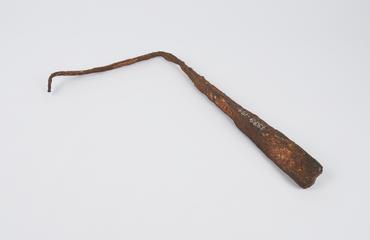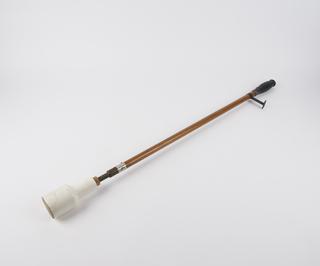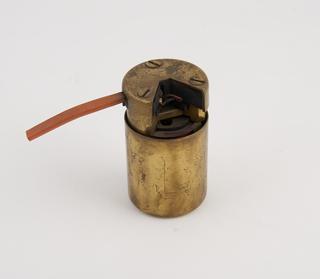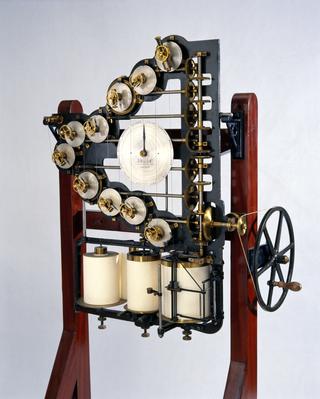
Rubidium-Vapour Magnetometer Sensor, 1968-1972
- Made:
- 1968-1972 in California
- maker:
- Varian Associates Inc.
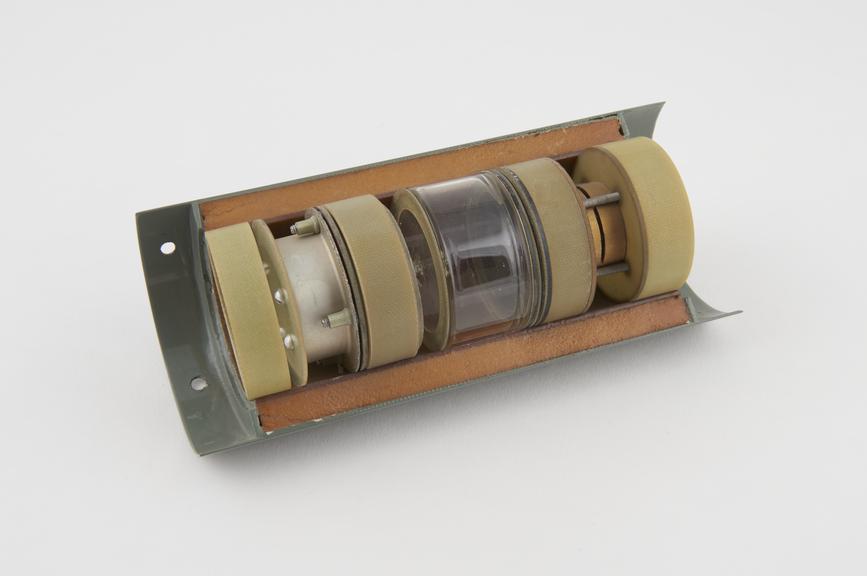
This Rubidium-vapour magnetometer was built by Varian Associates in between 1968 and 1972 in California.
The sensor itself is an approximately 10 cm long cylindrical tube which is divided into a few separated and sealed sections which contain vacuum spaces, filters, a lamp, a polarizer, and the centrally located rubidium gas cell.
This sensing unit would be plugged into a machine which reads the displacement of rubidium electrons after they have been exposed to high energy light.
This is the sensor element of a Rubidium-vapour magnetometer, which was designed and built in the United States1970 by Varian Associates (now Varian medical Systems).
Magnetometers are scientific instruments which measure the earth’s magnetic field and can detect variations in the magnetic field within localised areas. These variations are caused man-made or natural things which produce their own magnetic forces. There are many practical applications for magnetometers, such as being used on military vessels to detect hidden submarines, or in archaeology to locate buried structures and treasures. Magnetometers are also used in geophysical surveys to locate underground deposits of metals, in particular iron, or for helping to direct drills during the extraction of oil.
Magnetometers have existed for hundreds of years, the earliest and simplest types being magnetic compasses, the needles of which will deflect and move in response to varying local magnetic forces. In 1833, renown German physicist Carl Friedrich Gauss invented a more accurate magnetometer composed of a bar magnet held next to gold fibre which he used to calculate the absolute value for the strength of the Earth’ magnetic field.
Rubidium-vapour magnetometers were first designed and developed between 1968 and 1972. These magnetometers work through a process called ‘optical pumping’ in which rubidium vapour (helium, caesium or potassium can also be used), which is sealed in a chamber, is exposed to high energy light which increases or ‘pumps’ the energy of the rubidium electrons. This in turn forces the electrons into a more highly charged orbit, and as the electrons settle back into their original orbits, variations can be detected which reflect the strength of local magnetic forces. This design of magnetometer is highly accurate, and as such very useful in contemporary geological and archaeological surveying.
The makers of this sensor, Varian Associates were one of the first major Silicon Valley tech companies, and key pioneers of this technology alongside the United States Office of Naval Research and the Air Force Special Weapons Center.
Details
- Category:
- Geophysics
- Object Number:
- 1978-424
- Materials:
- aluminium alloy, plastic (unidentified), glass, steel (metal) and electronic components
- Measurements:
-
overall: 65 mm x 178 mm x 75 mm, .235kg
- type:
- magnetometer and component
- credit:
- Varian Associates Inc.

